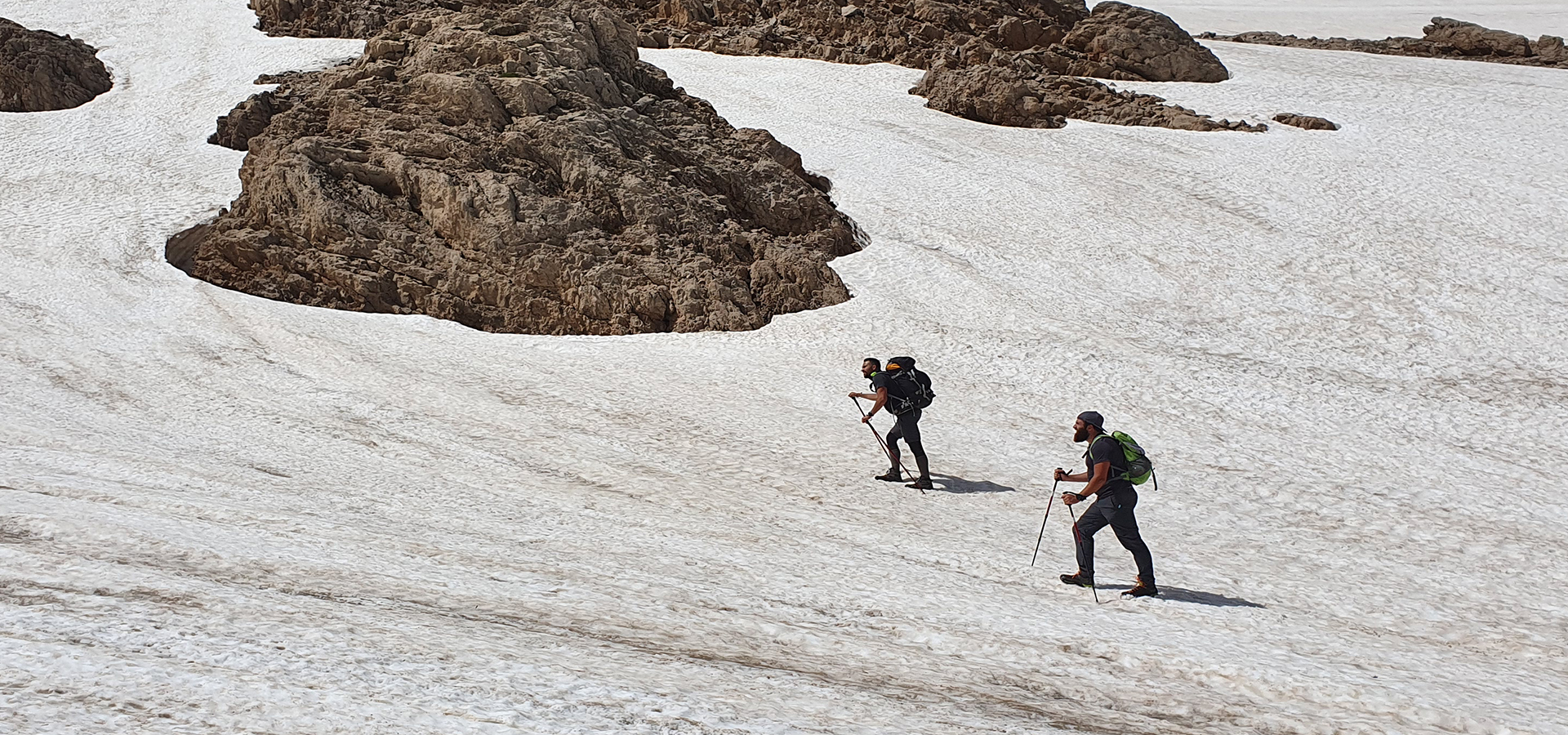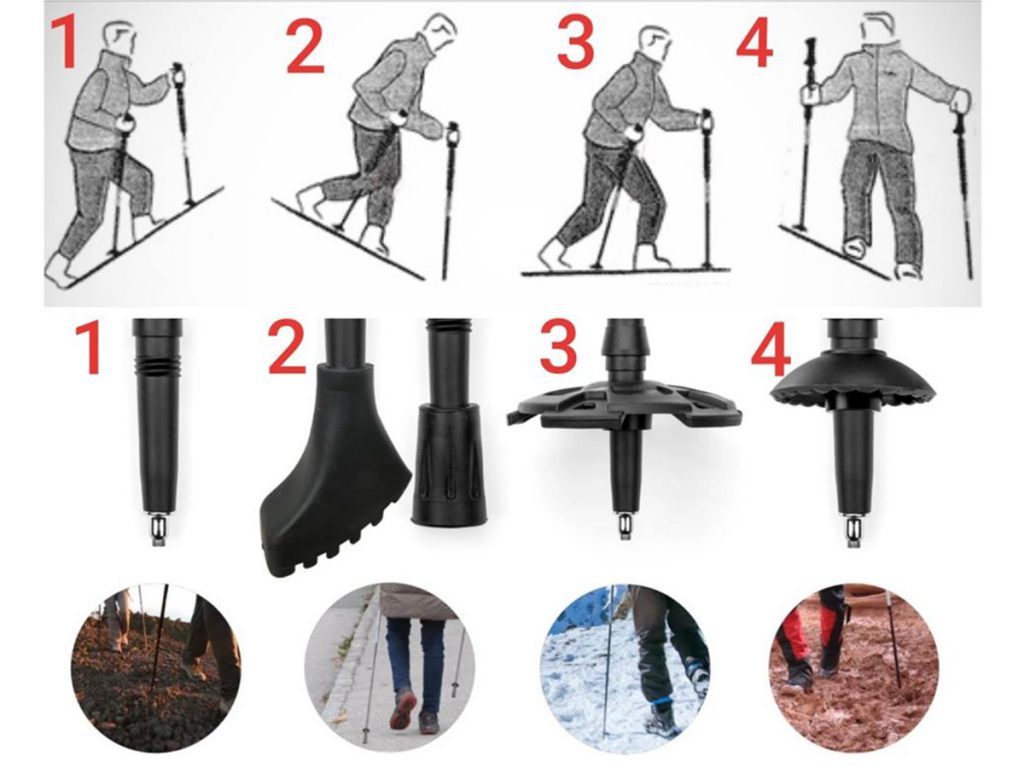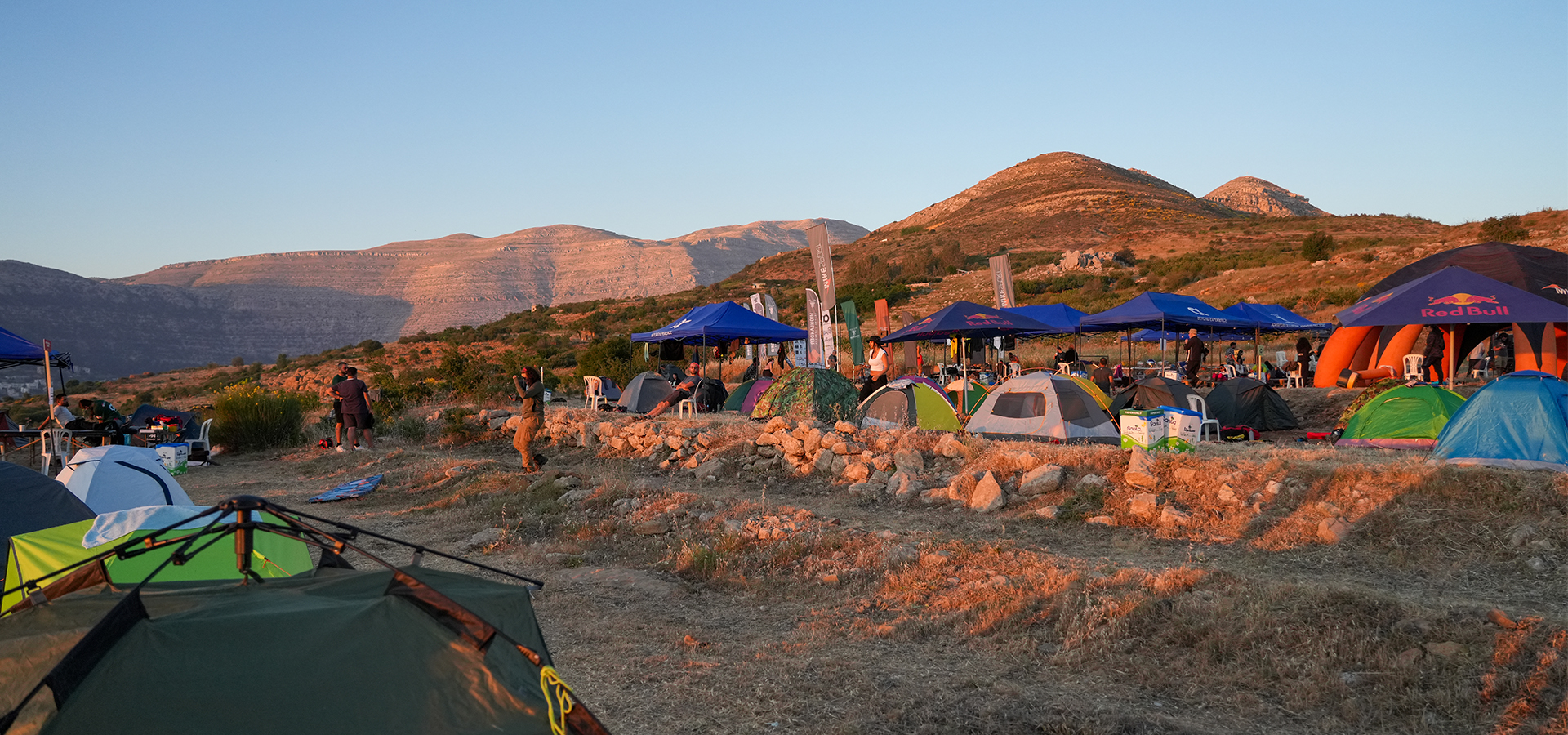
How to use “Trekking Poles” correctly
- March 25, 2020
- 0
𝗛𝗼𝘄 𝘁𝗼 𝘂𝘀𝗲 𝗧𝗿𝗲𝗸𝗸𝗶𝗻𝗴 𝗣𝗼𝗹𝗲𝘀 𝗰𝗼𝗿𝗿𝗲𝗰𝘁𝗹𝘆?
- Uphill: Poles should be shortened to a length which allow them to be planted in front of you.
- Downhill: Poles should be extended to a length which allows you to maintain an upright position.
- Flat: Arms should be bent at 90° with poles adjusted to this height.
- Contouring: Uphill pole is shorter than downhill pole giving support on either side of the body.

𝗪𝗵𝗶𝗰𝗵 𝗧𝗿𝗲𝗸𝗸𝗶𝗻𝗴 𝗣𝗼𝗹𝗲 𝗯𝗮𝘀𝗸𝗲𝘁 𝘆𝗼𝘂 𝘀𝗵𝗼𝘂𝗹𝗱 𝘂𝘀𝗲?
- Tungsten Carbide Tip: General use for dirt and gravel.
- Boot and Small Tip: For indoor use and hard or slippery surfaces.
- Snow Baskets: For winter hiking and snowshoeing.
- Mud Baskets: For mud, sand and other soft surfaces











